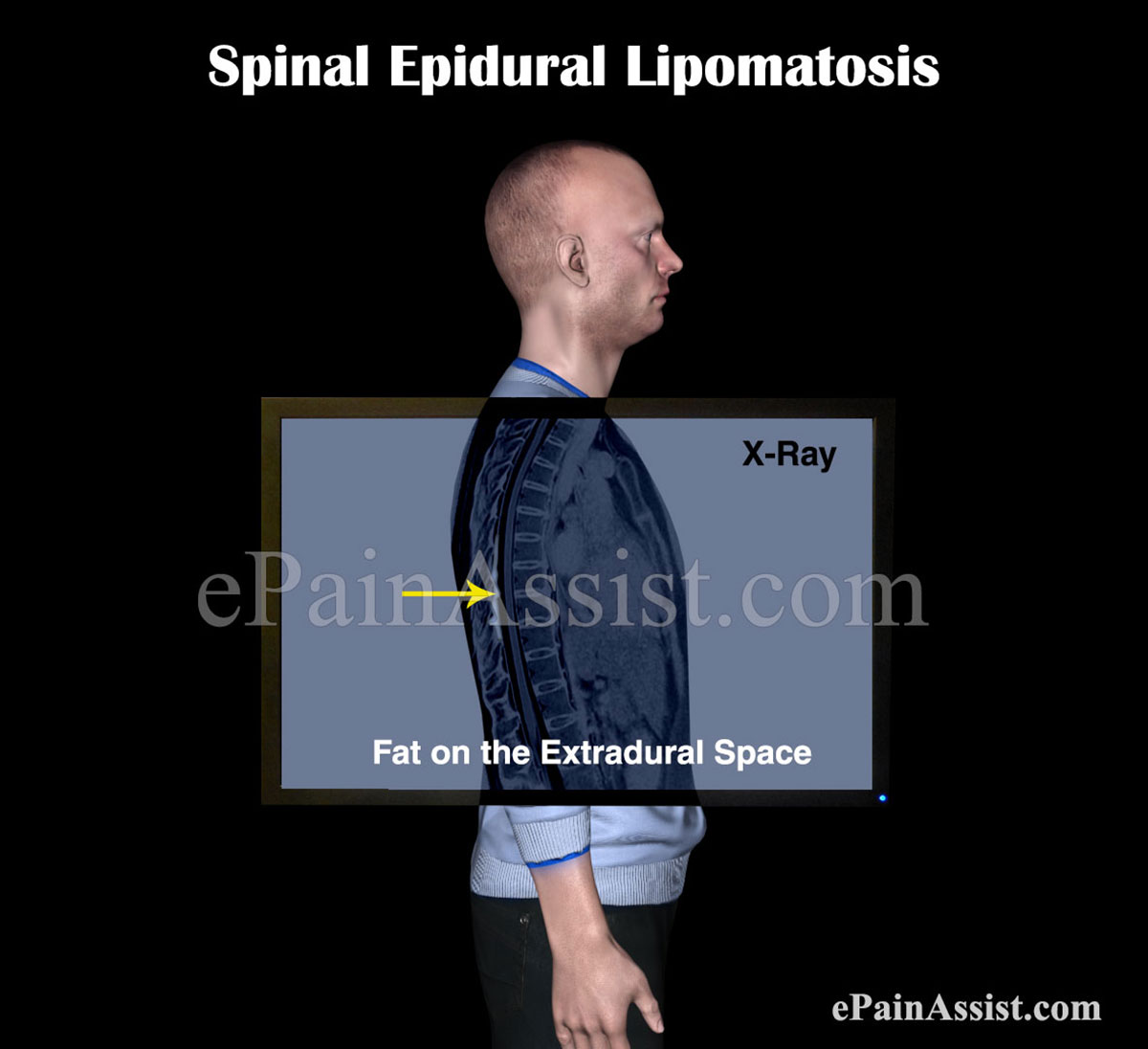What is Spinal Epidural Lipomatosis?
Spinal Epidural Lipomatosis is a rare complicated disorder characterized by pathological epidural fat tissue in the spinal canal resulting in impingement or compression of the spinal cord.1 This condition mostly affects the thoracic spine and is seen in males more than it is seen in females. Spinal Epidural Lipomatosis is believed to develop due to excess production of corticosteroids or administration of steroids for various other ailments. It is also believed to be caused in obese individuals. The classic presenting feature of Spinal Epidural Lipomatosis is pain in the lumbar or thoracic spine region with radiation of pain down the lower extremities along with paresthesias and weakness of the lower extremities. These symptoms may indicate other disorders of the spine as well and other conditions that need to be ruled out before confirming a diagnosis of Spinal Epidural Lipomatosis.

What are the Causes of Spinal Epidural Lipomatosis?
As stated, Spinal Epidural Lipomatosis is caused by excess production of corticosteroids.2 Individuals being administrated steroids for various diseases like Cushing Disease also tend to get Spinal Epidural Lipomatosis. Obesity is also something which predisposes an individual at risk for developing Spinal Epidural Lipomatosis. Some of the other rare causes of Spinal Epidural Lipomatosis are hypothyroidism, Paget’s disease, baclofen pump implantation.
What are the Symptoms of Spinal Epidural Lipomatosis?
The classic presenting symptoms of Spinal Epidural Lipomatosis are dorsal or lumbar pain along with weakness of the lower extremities and paresthesias.3 There may also be symptoms resembling radicular pain. There is also decreased sensation to normal testing like pinprick and light touch. There may also be abnormal reflexes in the lower extremities.

How is Spinal Epidural Lipomatosis Diagnosed?
Radiological studies can definitively confirm the diagnosis of Spinal Epidural Lipomatosis. ACT or an MRI scan will show excess fat on the extradural space especially in the thoracic spine compressing the spinal cord and confirm the diagnosis of Spinal Epidural Lipomatosis.
How is Spinal Epidural Lipomatosis Treated?
The treatment for Spinal Epidural Lipomatosis is dependent on the severity of the symptoms and how disabled the patient is. Once a cause of the condition is identified then a definitive treatment can be formulated which can be both conservative and surgical. The surgical procedure may consist of fat debulking or laminectomy. If the symptoms are severely debilitating and progressive then surgery is the most preferred form of treatment for Spinal Epidural Lipomatosis. Coming to the success rate for surgical treatment then it crosses the 75% mark and is fairly successful with complete relief of symptoms. Coming to conservative treatment for Spinal Epidural Lipomatosis, weight loss is the way to go along with tapering steroids, use of pain medications to relieve pain, NSAIDs for relieving pain and inflammation, and bedrest. Surgical treatment is considered only after conservative treatment fail to relieve the symptoms.
